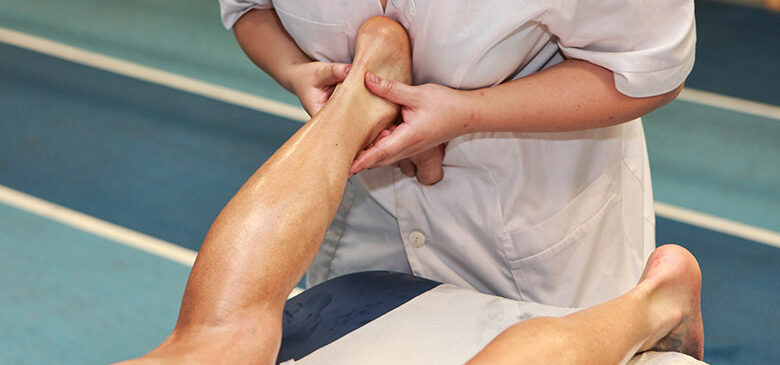How to Get the Best Physical Therapy for Achilles tendon Pain?



Achilles tendon is the thickest tendon in the human body that attaches plantaris, calf and soleus muscles to the calcaneus or heel bone. When you hurt your Achilles tendon due to overuse or exercise, it will cause pain and swelling near the heel region. The condition is also known as Achilles Tendinosis. When your Achilles tendon breaks or ruptures, you will experience acute pain in the heel. It may be caused due to sudden bending of the foot, direct trauma, or long-terms Achilles tendinosis. It is essential to get excellent Achilles tendon pain physical therapy in Philadelphia from a renowned and experienced physiotherapist.
Your therapist will provide hands-on-care, expert guidance, and a personalized exercise program that reduces pain, eliminates swelling, improves mobility, and enhances strength and flexibility. The expert treatment will help you get back on your track and carry out routine activities effortlessly. Based on the severity of Achilles pain, your therapist will devise a physical therapy plan for you and make specific goals to achieve that will improve your physical condition. The treatment plan may last from 2-4 weeks to six months, depending on your Achilles tendon condition and how it responds to the exercise program and manual therapy.
When you visit a physical therapist, he will diagnose your heel, ankle, and calf’s health condition. After reviewing your medical history, he will thoroughly examine your heel, ankle, and calf. He will observe your foot posture, flexibility, strength, and movement while you walk, squat, raise a heel or step onto a stair. Although you may not require MRI or X-Ray to diagnose, your therapist may consult an orthopedist to determine the best treatment method if your Achilles tendon does not respond to conservative care.
How Physical Therapist Helps in Achilles tendon Injury
Consulting an experienced therapist for Achilles heel injury physical therapy in Philadelphia is the first step in the right direction. Your therapist will use various methods to help you get the maximum health benefits from a customized treatment plan that may include:-
- Pain management
Your therapist’s first important priority is to reduce pain and help you get free from it eventually. For this, they use ice on the affected area or may put the affected leg in a brace. Their pain-relief methods may include therapies such as iontophoresis or therapeutic ultrasound. You will not require to rely on pain medications, including opioids.
- Manual therapy
You get hands-on treatments from your therapist, who moves your muscles and joints in a specific way to improve their motion and function. They use techniques that help them address difficult areas to treat on your own.
- Range-of-motion treatments
It consists of manual therapy techniques and stretching and flexibility exercises that help restore the normal movement and flexibility in your foot, ankle, hip, and knee. Your therapist will ensure that your Achilles tendon does not get added pressure due to your foot or ankle’s faulty movement.
- Gentle exercise
As you progress and your tendon heals, your therapist will lead you to perform some strengthening exercises by loading your tendon with some weight through an exercise program. Gentle strengthening exercises aim to strengthen your tendon while you do them in a seated position and a standing position.
- Muscle-strengthening exercises
Muscle weakness is one of the significant causes of strain on the Achilles tendon. For this, your therapist will devise a tailored, progressive, lower-extremity resistance program for you. It will enhance strength in knee and hip muscles and resolve any weakness-associated movement errors leading to your pain.
- Functional Training
When you experience freedom from pain and improved strength and flexibility, your therapist will lead you to progress to more demanding exercises. It would help if you learned safe and controlled joints and body movements that prevent any Achilles tendon injury. Your therapist will guide you to perform specific routine functions that will enlighten you to use your muscles properly and perform those functions without straining your tendon. Your therapist will monitor your progress and assess your health condition.
Besides these, if the therapist feels the need for additional interventions, he will work with you to provide injections or get minimally invasive procedures that offer the desired results. It is essential to check out the physiotherapist’s credentials and consult with a reputed and experienced one who can provide you the best therapy at a pocket-friendly price. It will help if you do your due diligence to check out the physical therapist’s reviews and reputation. Experience freedom from pain due to tendon injury and enjoy your life to its brim.
